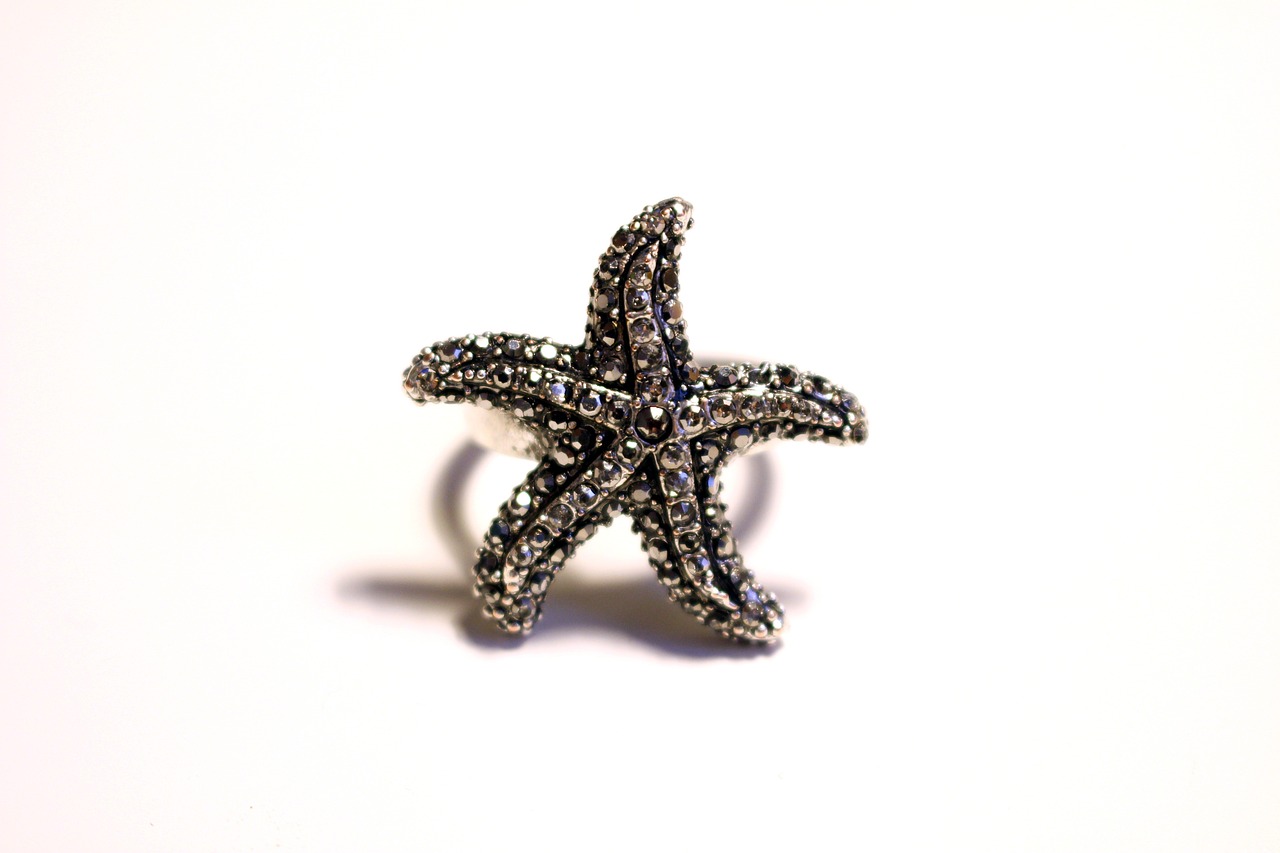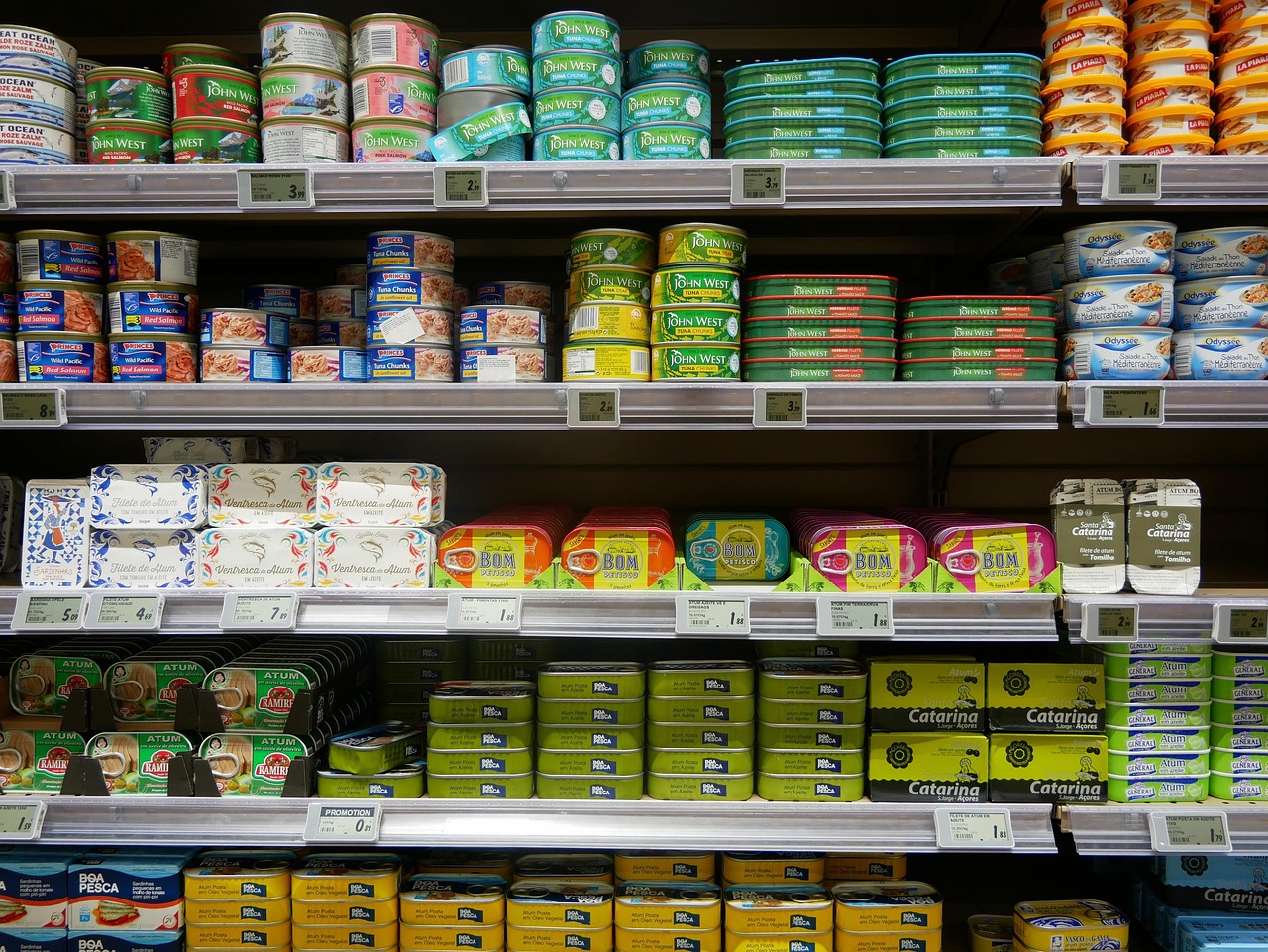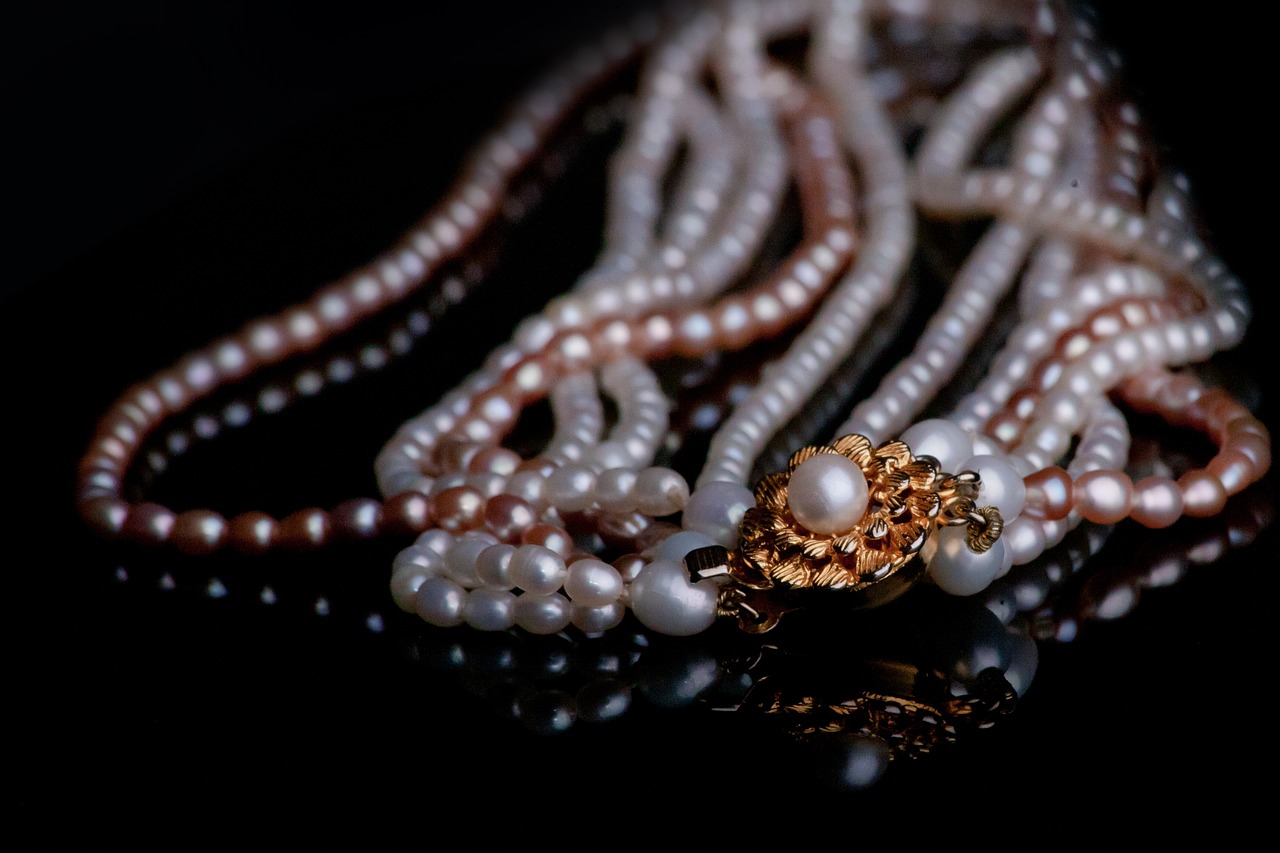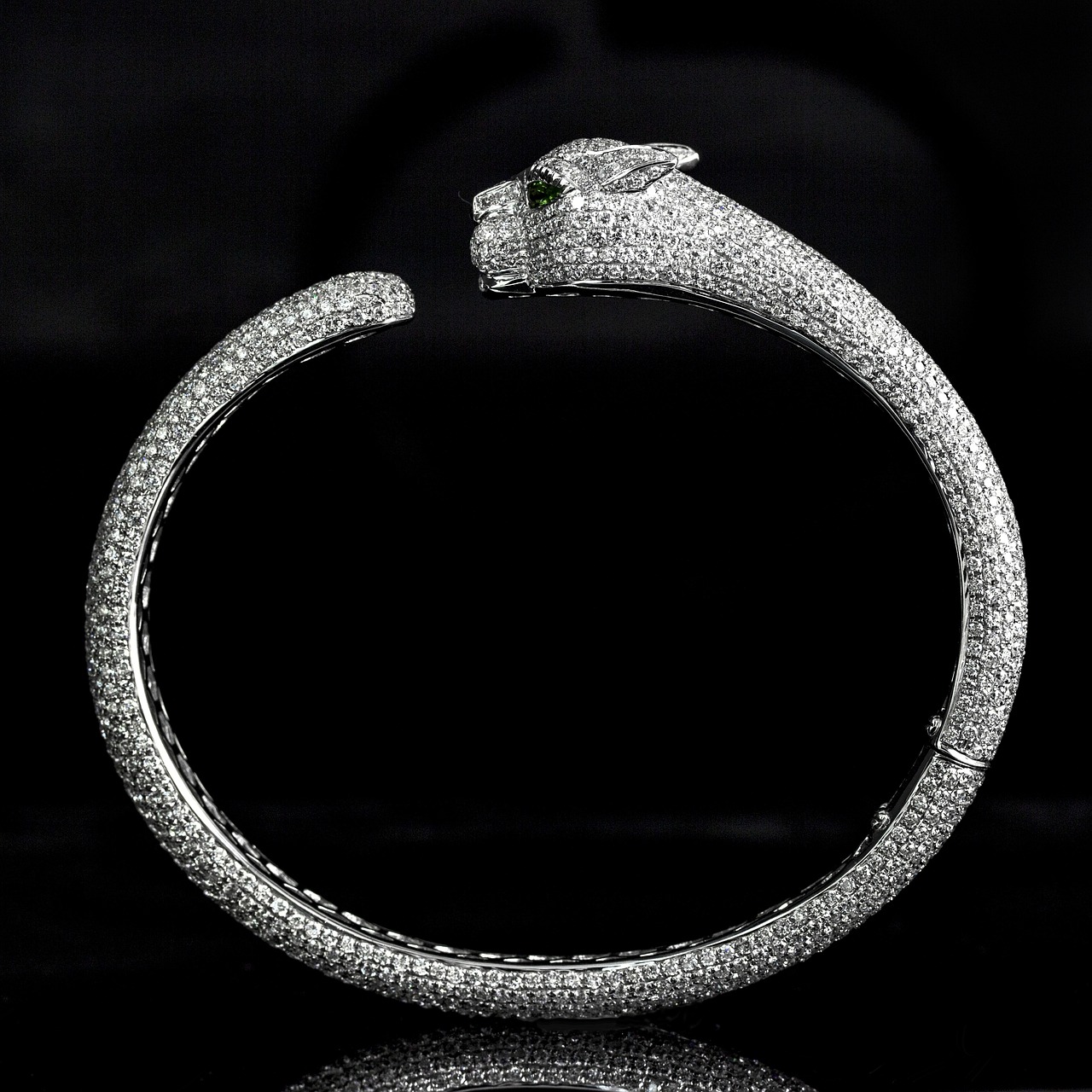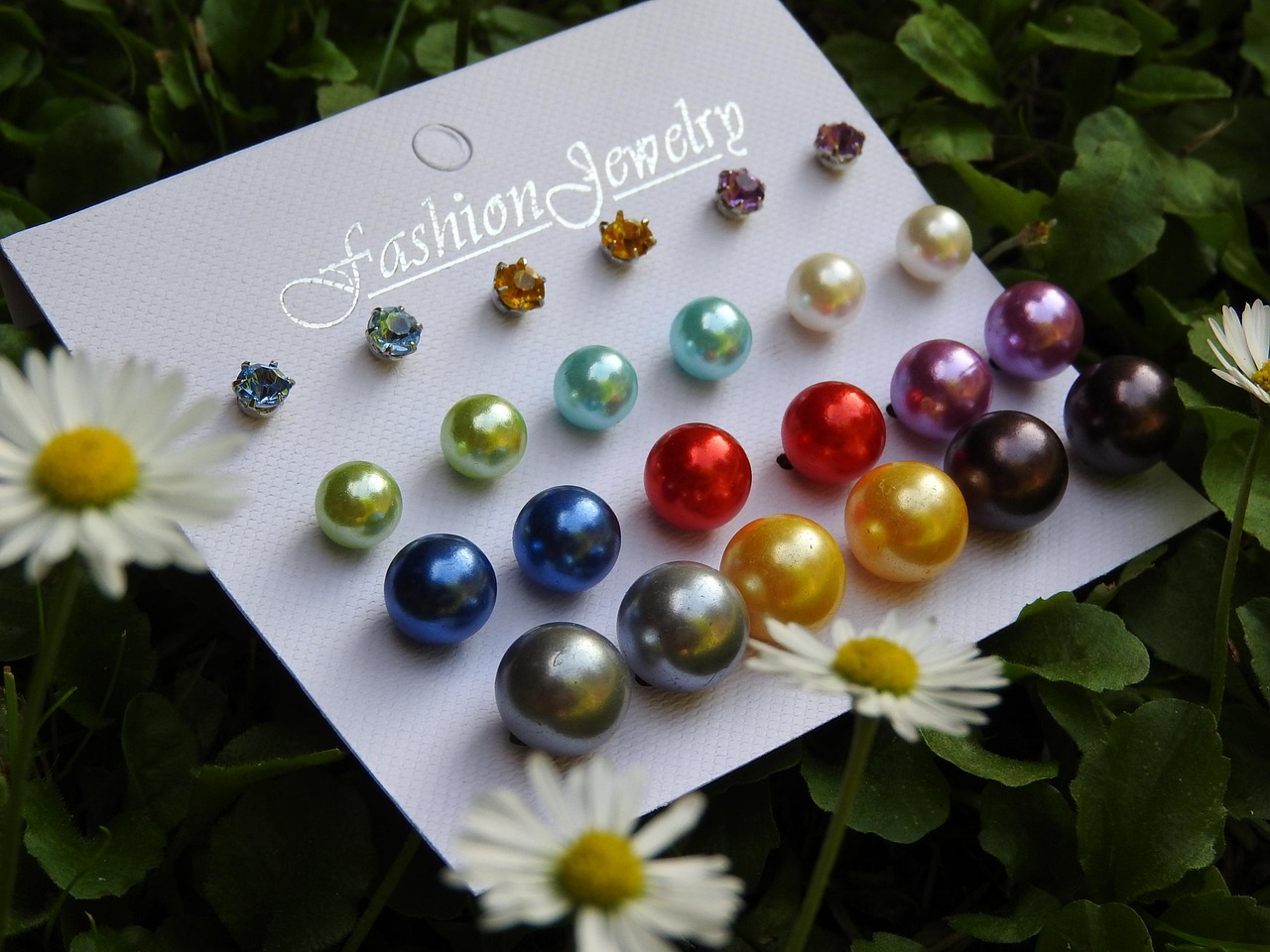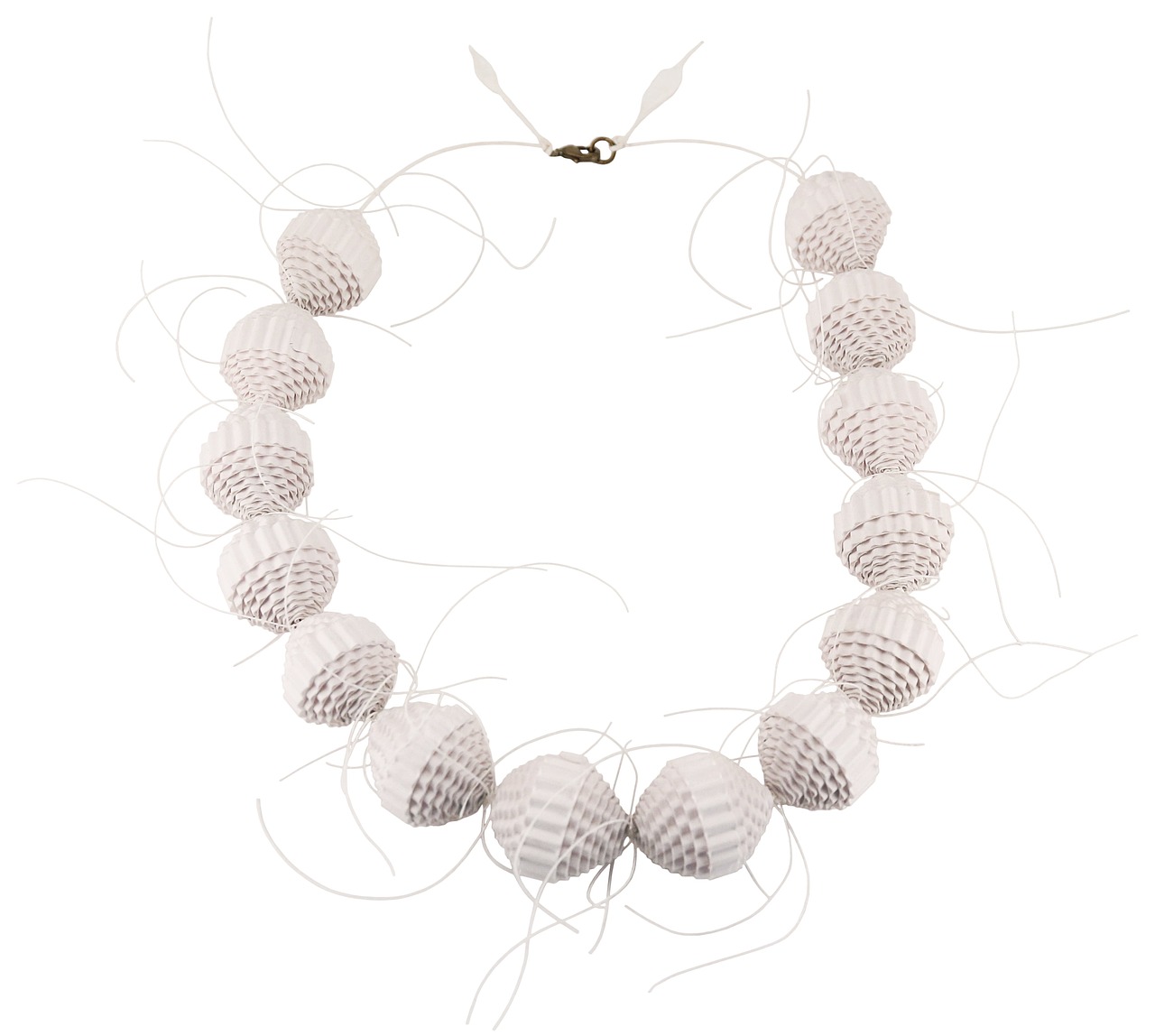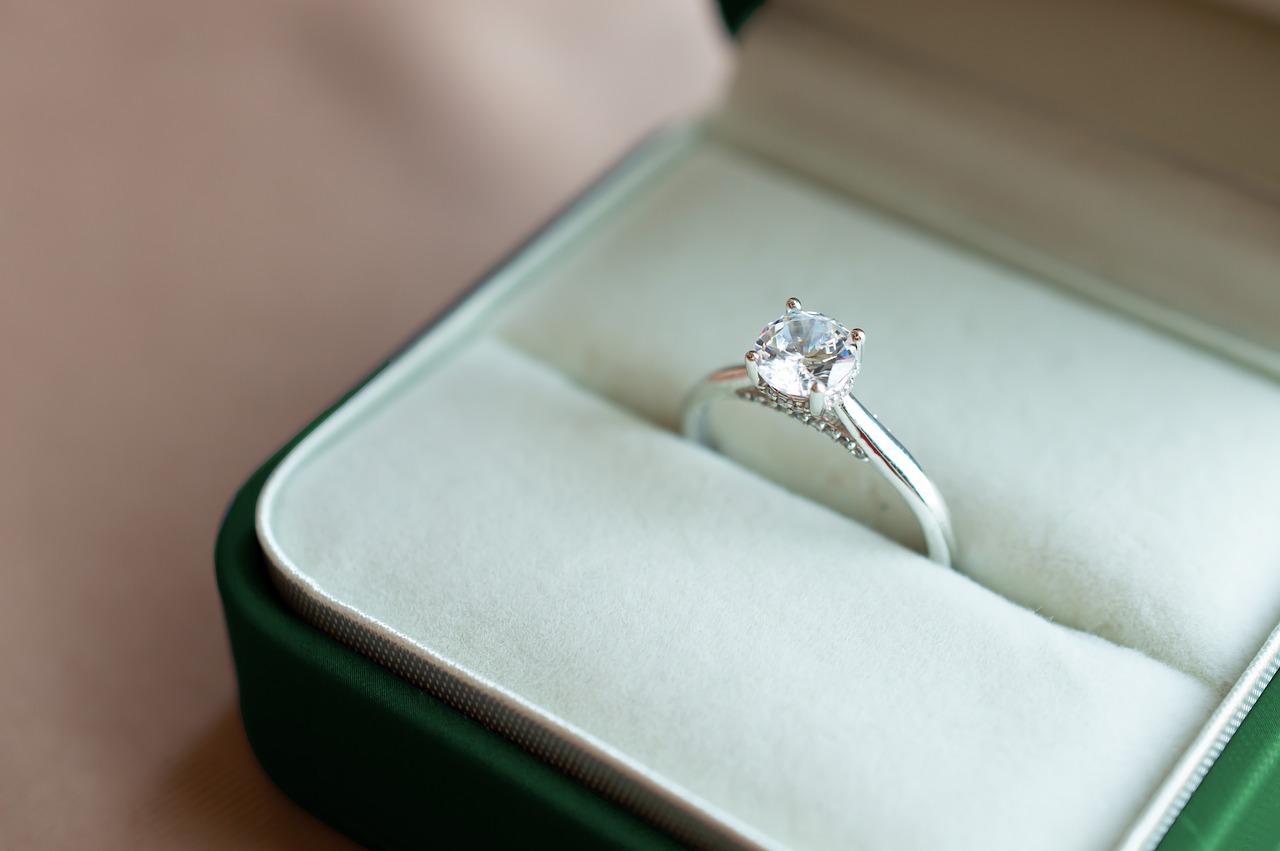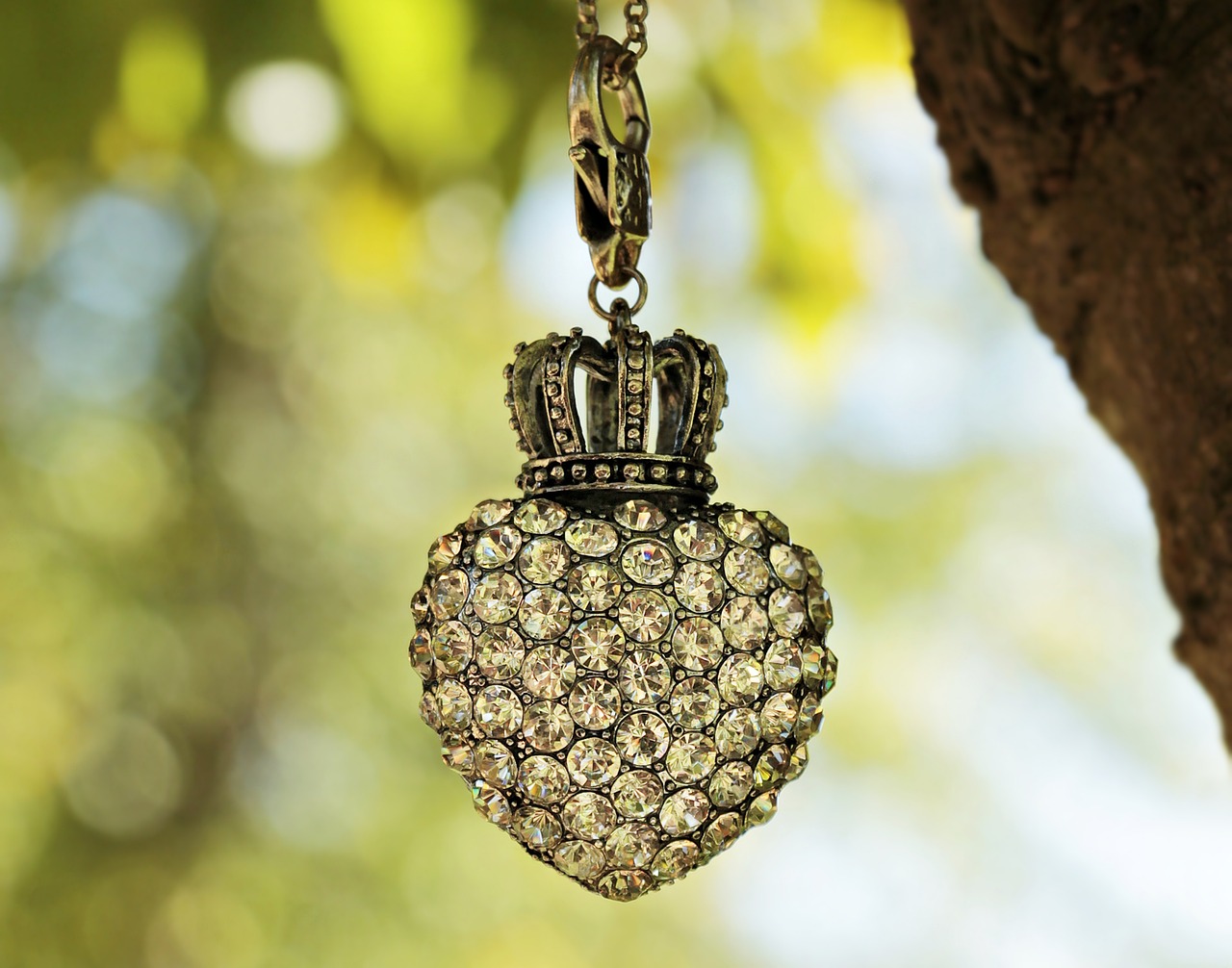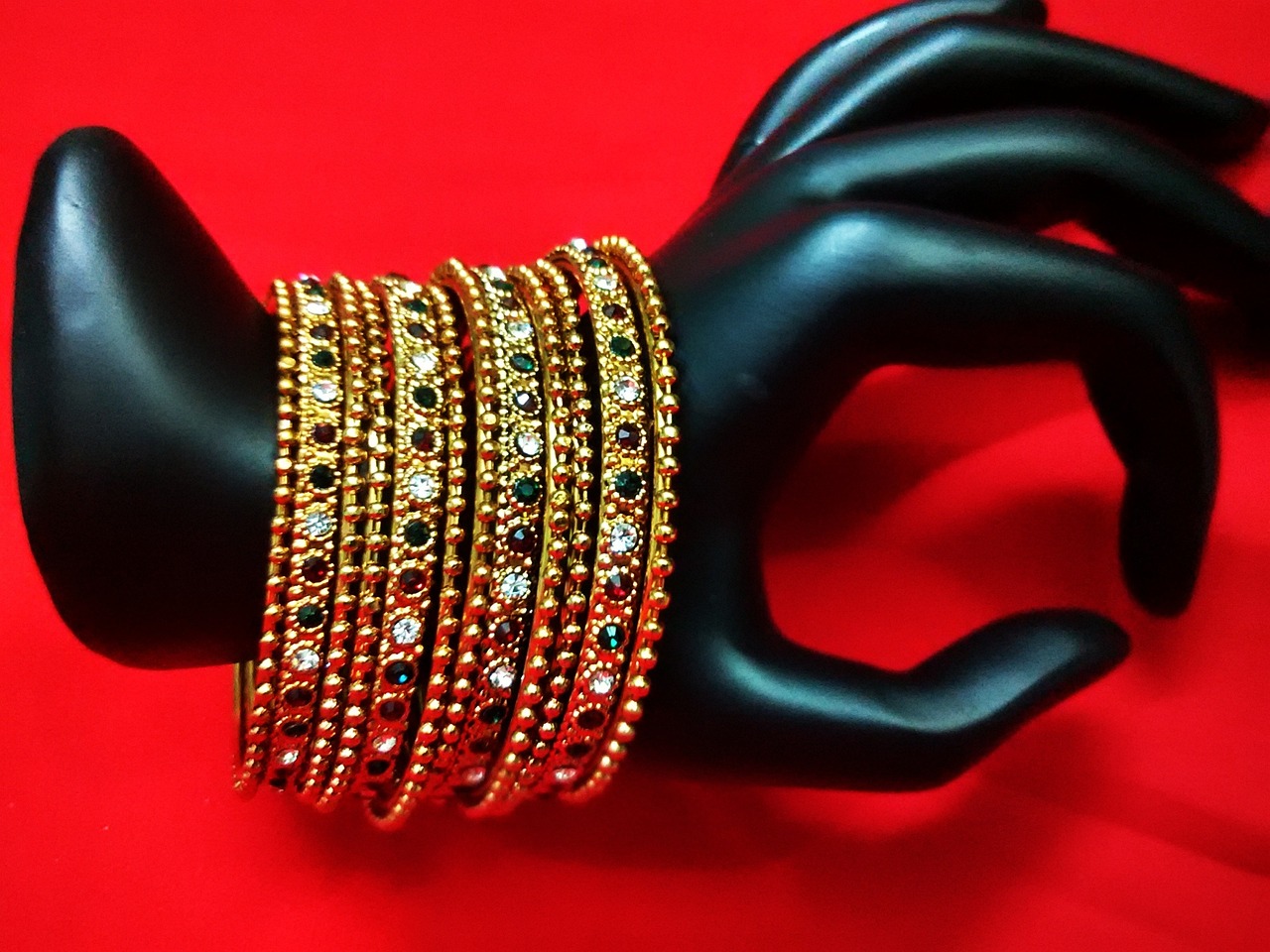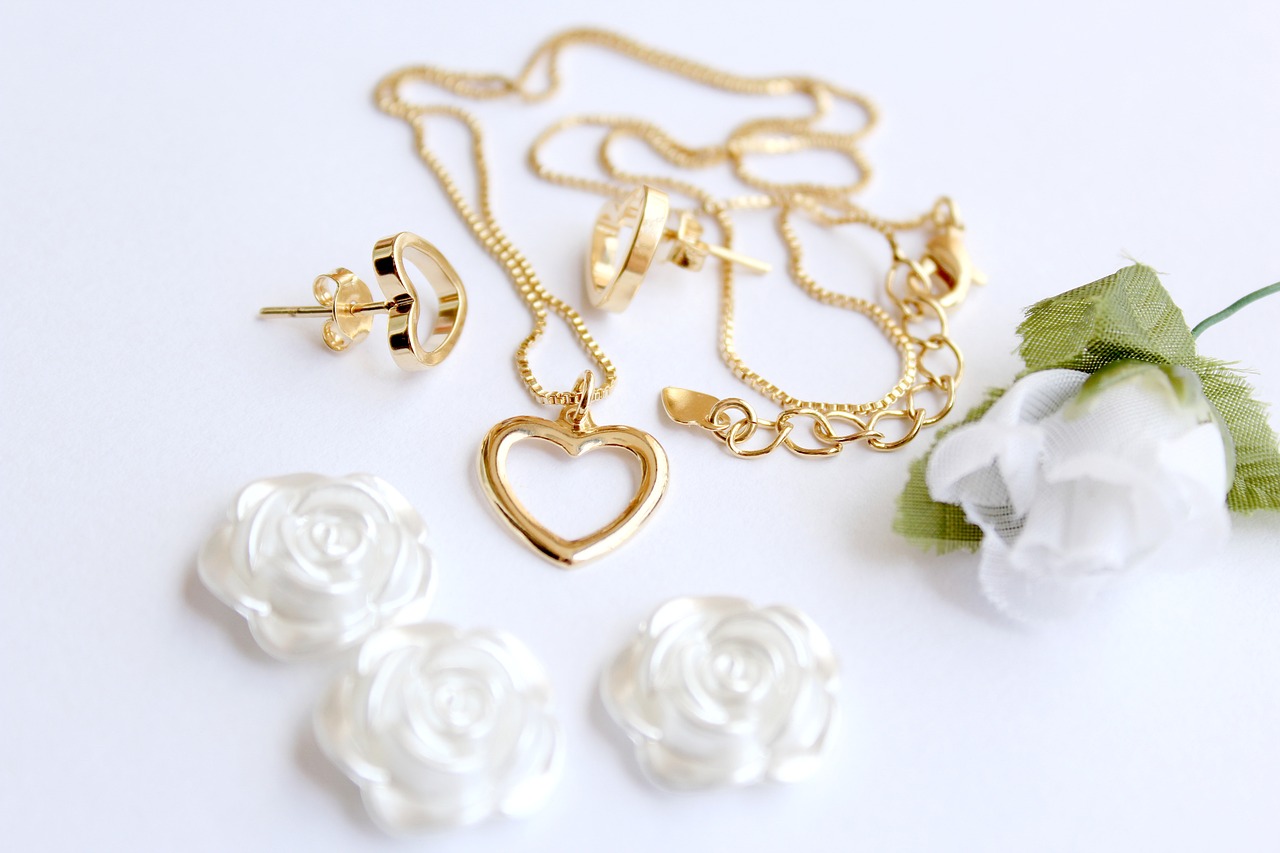Eco-friendly and sustainable jewelry is more than just a trend; it represents a commitment to ethical practices and environmental responsibility. As consumers become more conscious of their purchasing decisions, the demand for jewelry that aligns with personal values has surged. This article delves into the significance of ethical sourcing, the types of materials used, and where to find these beautiful pieces that contribute positively to our planet.
Choosing eco-friendly jewelry is essential for several reasons. First, it promotes sustainable practices that reduce environmental impact. Second, it supports ethical labor practices, ensuring that artisans and workers receive fair compensation. By opting for sustainable jewelry, consumers can make informed choices that reflect their values while contributing to a more sustainable fashion industry.
Sustainable jewelry often incorporates a variety of materials that are both beautiful and environmentally friendly. Key materials include:
- Recycled Metals: Utilizing metals that have been repurposed minimizes mining waste and energy consumption.
- Ethically Sourced Gemstones: These gemstones are mined with respect for human rights and environmental standards.
- Eco-Friendly Materials: Options like bamboo, wood, and organic fabrics are becoming increasingly popular.
Finding retailers that specialize in sustainable jewelry can be challenging. However, there are several reputable online platforms and local artisans dedicated to ethical practices:
- Brilliant Earth: Known for its commitment to ethically sourced diamonds and recycled metals.
- Ten Thousand Villages: Offers unique pieces made by artisans from around the world.
- Catbird: A Brooklyn-based brand that focuses on sustainable practices and local craftsmanship.
Supporting local artisans at craft fairs can lead to unique and sustainable jewelry finds. These events often showcase handmade pieces that reflect the creator’s commitment to ethical practices. To find such events, check local community boards or online platforms that list artisan markets.
Recognizing truly ethical jewelry brands involves understanding their sourcing and manufacturing practices. Here are some tips:
- Certifications and Labels: Look for brands that display certifications indicating their commitment to sustainability.
- Research Brand Transparency: Assess a brand’s website for information about their sourcing, production processes, and labor practices.
Choosing sustainable jewelry has a positive impact on the environment. By reducing the demand for newly mined materials, eco-friendly brands help to:
- Reduce Carbon Footprint: Sustainable practices often lead to lower carbon emissions.
- Support Fair Trade Practices: By ensuring fair wages and safe working conditions, these brands contribute to better livelihoods for communities.
To extend the life of your eco-friendly jewelry, proper care is essential. Here are some practical tips:
Use eco-friendly cleaning methods, such as mild soap and water, to keep your jewelry looking its best.
To prevent damage and wear, store your jewelry in a cool, dry place, ideally in a soft pouch or box.
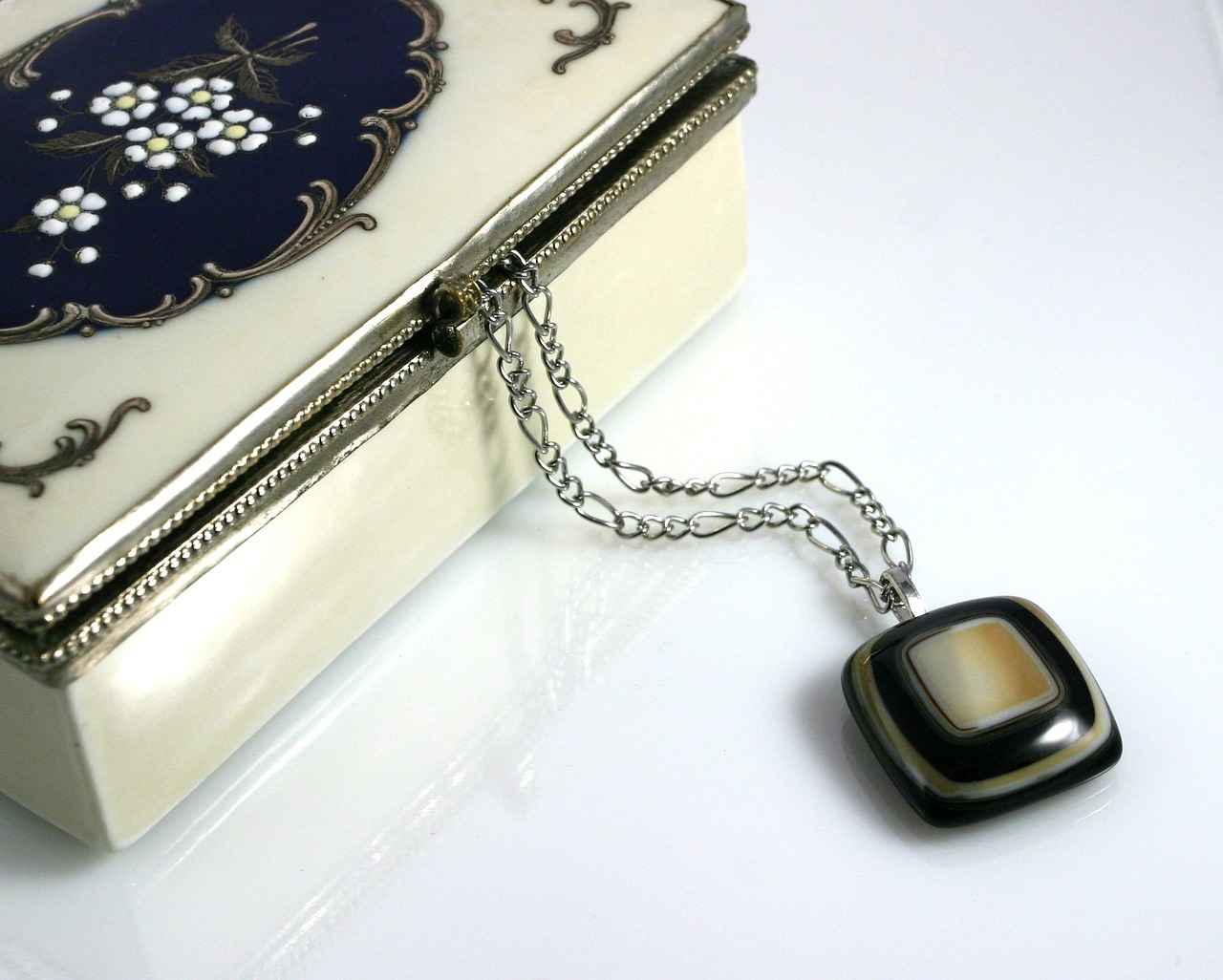
Why Choose Eco-Friendly Jewelry?
In today’s world, where environmental concerns are at the forefront of consumer consciousness, making informed choices is crucial. Eco-friendly jewelry not only enhances your style but also reflects your commitment to sustainability. By choosing jewelry that is ethically sourced and environmentally responsible, you can align your purchases with your values and contribute positively to the planet.
Understanding the benefits of eco-friendly jewelry helps consumers make informed decisions that resonate with their personal ethics and environmental goals. Here are several compelling reasons to consider:
- Support Sustainable Practices: Eco-friendly jewelry often involves sustainable practices that minimize environmental impact. By choosing these pieces, you are supporting brands that prioritize the planet over profit.
- Reduce Environmental Impact: Traditional jewelry production can be harmful to the environment, involving practices that deplete natural resources and contribute to pollution. Eco-friendly alternatives often utilize recycled materials and sustainable sourcing methods, significantly reducing their ecological footprint.
- Ethical Sourcing: Many eco-friendly jewelry brands ensure that their materials are sourced ethically, meaning that the rights and welfare of workers are respected. This commitment to social responsibility adds value to your purchase.
- Unique Designs: Eco-friendly jewelry often features unique designs that stand out from mass-produced items. Many artisans create one-of-a-kind pieces that reflect their creativity and dedication to sustainability.
- Long-lasting Quality: Sustainable jewelry is typically made with high-quality materials that are designed to last. This durability means that your eco-friendly jewelry can be a lasting part of your collection, reducing the need for frequent replacements.
By choosing eco-friendly jewelry, you are not just making a fashion statement; you are also making a statement about your values. With each purchase, you contribute to a growing movement that emphasizes the importance of sustainability in the fashion industry.
Eco-friendly jewelry plays a significant role in promoting sustainability within the fashion industry. Here are some ways it contributes:
- Utilizing Recycled Materials: Many eco-friendly pieces are crafted from recycled metals and materials, which reduces the demand for new resources and minimizes waste.
- Promoting Fair Trade: Sustainable brands often engage in fair trade practices, ensuring that artisans receive fair compensation for their work, thus supporting local economies.
- Encouraging Conscious Consumerism: By choosing eco-friendly jewelry, consumers are encouraged to think critically about their purchasing habits, leading to more responsible consumption overall.
As consumers become increasingly aware of the impact of their choices, the demand for eco-friendly jewelry continues to rise. This shift not only benefits the environment but also encourages brands to adopt more sustainable practices.
Finding eco-friendly jewelry is easier than ever, with many retailers and online platforms dedicated to offering sustainable options. Look for brands that are transparent about their sourcing and production practices, as this transparency is a key indicator of their commitment to sustainability.
In conclusion, choosing eco-friendly jewelry is a powerful way to express your values while contributing to the well-being of the planet. By supporting ethical brands and sustainable practices, you can make a meaningful impact in the fashion industry.
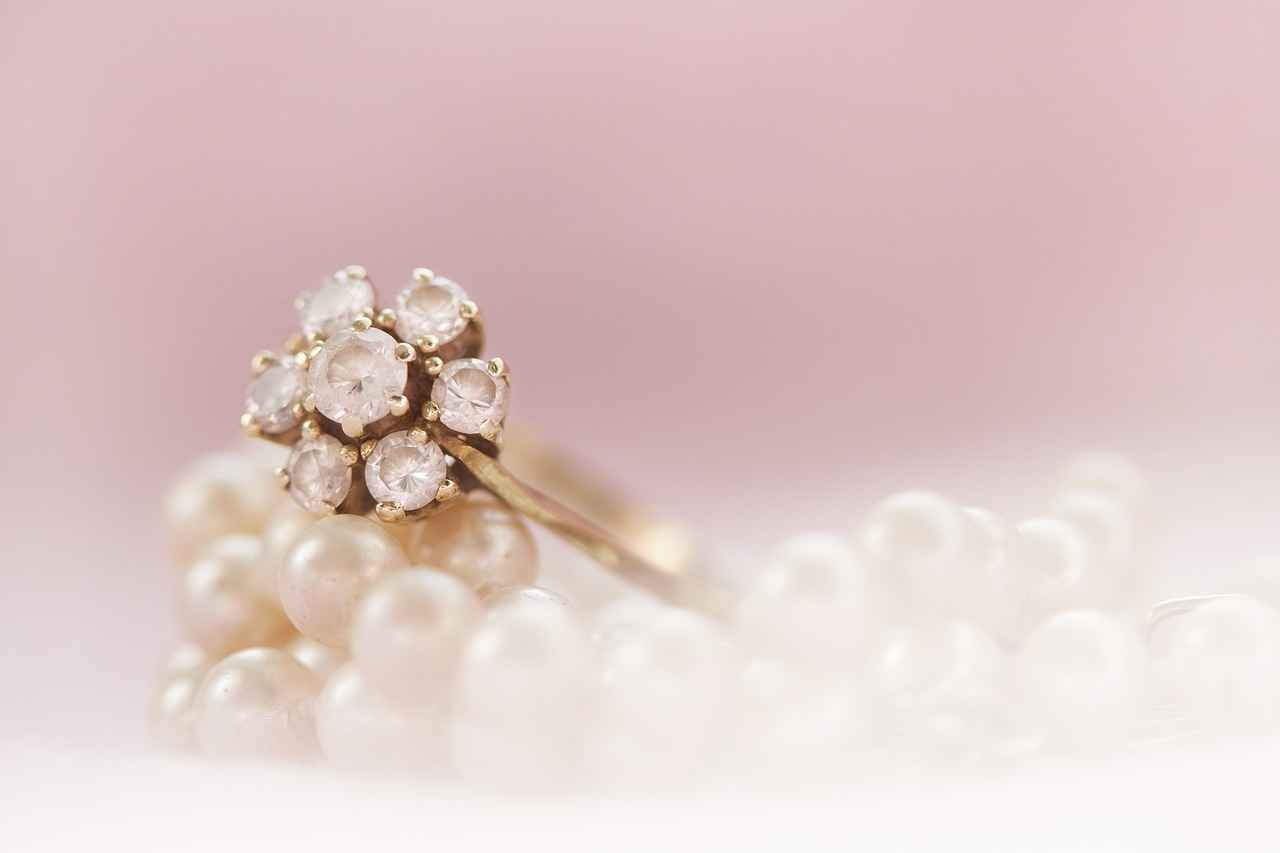
What Materials Are Used in Sustainable Jewelry?
Sustainable jewelry is gaining popularity as consumers become more conscious of their environmental impact and ethical considerations. One of the key aspects of this trend is the materials used in creating these beautiful pieces. Understanding what materials are utilized in sustainable jewelry helps consumers make informed decisions that align with their values.
Sustainable jewelry often incorporates recycled metals, ethically sourced gemstones, and eco-friendly materials. Each of these components plays a crucial role in reducing the ecological footprint of the jewelry industry.
Using recycled metals is one of the most effective ways to minimize the environmental impact of jewelry production. By repurposing existing metals, brands can significantly reduce the need for new mining, which is often detrimental to the environment.
- Gold: Recycled gold is sourced from old jewelry, electronics, and other sources, minimizing the need for harmful mining practices.
- Silver: Like gold, recycled silver comes from various sources, including industrial waste and old jewelry, making it a sustainable option.
- Platinum: This precious metal can also be recycled, offering a luxurious yet environmentally friendly choice for consumers.
Ethically sourced gemstones ensure that the materials used in jewelry are obtained without exploiting workers or harming the environment. These gemstones are often certified by organizations that monitor their sourcing practices.
- Conflict-Free Diamonds: These diamonds are sourced from mines that adhere to strict ethical guidelines, ensuring they do not fund violence or human rights abuses.
- Lab-Created Gemstones: These stones are made in controlled environments, reducing the ecological footprint associated with traditional mining.
In addition to metals and gemstones, sustainable jewelry often incorporates eco-friendly materials such as:
- Wood: Sustainably sourced wood can be used to create unique and beautiful jewelry pieces.
- Recycled Glass: This material can be transformed into stunning beads and pendants, contributing to a circular economy.
- Organic Fabrics: Some jewelry pieces feature organic cotton or hemp, adding an eco-conscious touch.
The use of sustainable materials in jewelry production significantly reduces the environmental impact associated with traditional jewelry manufacturing. By choosing recycled metals and ethically sourced gemstones, consumers can help:
- Conserve Natural Resources: Reducing the demand for new raw materials leads to less mining and environmental degradation.
- Support Fair Trade Practices: Many sustainable brands prioritize fair labor practices, ensuring that artisans are compensated fairly.
- Lower Carbon Footprint: Sustainable practices often lead to reduced energy consumption and lower greenhouse gas emissions.
By understanding the materials used in sustainable jewelry, consumers can make choices that not only enhance their personal style but also contribute to a healthier planet. Embracing sustainable jewelry means supporting ethical practices and making a positive impact on the world.
Recycled Metals: The Sustainable Choice
In the quest for sustainability, recycled metals stand out as a crucial component in the jewelry industry. By utilizing these materials, brands not only create stunning pieces but also play a significant role in reducing mining waste and energy consumption. This section delves into the various aspects of recycled metals and their importance in the realm of eco-friendly jewelry.
Recycled metals refer to materials that have been reclaimed from old jewelry, electronics, or other sources, rather than being newly mined from the earth. This process significantly lessens the environmental impact associated with traditional mining, which can be both destructive and energy-intensive.
- Minimizing Mining Waste: Mining for metals often leads to substantial waste, including toxic byproducts that can harm local ecosystems. By using recycled metals, brands help to reduce this waste.
- Lowering Energy Consumption: The energy required to extract and refine new metals is considerably higher than that needed to process recycled materials. This energy savings translates into a smaller carbon footprint.
- Conserving Natural Resources: Utilizing recycled metals helps to preserve finite resources, ensuring that future generations have access to these materials.
Several types of metals can be recycled for use in jewelry, including:
- Gold: Recycled gold is often sourced from old jewelry or electronics, making it a popular choice among eco-conscious consumers.
- Silver: Similar to gold, recycled silver is reclaimed from various sources, reducing the need for new mining.
- Platinum: This precious metal can also be recycled, offering a sustainable option for high-end jewelry pieces.
Opting for jewelry made from recycled metals comes with numerous benefits:
- Environmental Conservation: By choosing recycled options, consumers actively contribute to the reduction of pollution and habitat destruction.
- Support for Ethical Practices: Many brands that use recycled metals are committed to ethical sourcing and fair labor practices, ensuring that their products are not only sustainable but also socially responsible.
- Unique Aesthetics: Recycled metals often have a distinct character, offering unique textures and finishes that can enhance the beauty of jewelry pieces.
When searching for sustainable jewelry, consider the following tips:
- Look for Certifications: Reputable brands often carry certifications indicating their commitment to sustainability and ethical sourcing.
- Research Brand Transparency: Brands that openly share their sourcing practices and production methods are more likely to prioritize sustainability.
- Ask Questions: Don’t hesitate to reach out to brands to inquire about their materials and processes. A transparent brand will be happy to provide information.
In conclusion, choosing jewelry made from recycled metals is not just a fashionable choice; it is a responsible decision that contributes to a more sustainable future. By supporting brands that prioritize recycled materials, consumers can enjoy beautiful pieces while minimizing their ecological footprint.
Types of Recycled Metals in Jewelry
When it comes to sustainable jewelry, understanding the types of recycled metals used is essential. Recycled metals not only minimize environmental impact but also offer unique aesthetic qualities. This section delves into the most commonly used recycled metals in jewelry, including gold, silver, and platinum, highlighting their benefits and contributions to a greener planet.
Recycled metals are derived from previously used materials, significantly reducing the need for new mining operations. This process conserves natural resources and decreases pollution. Here are some key types of recycled metals used in sustainable jewelry:
- Recycled Gold: Gold is one of the most popular metals in jewelry making. When sourced from recycled materials, it retains its beauty and value while reducing the environmental damage associated with gold mining. Recycled gold can come from old jewelry, electronics, and industrial scraps, proving to be a responsible choice for eco-conscious consumers.
- Recycled Silver: Similar to gold, recycled silver is derived from various sources, including old jewelry and silverware. This metal is not only affordable but also versatile, making it a favorite among jewelers. By opting for recycled silver, consumers help decrease the demand for newly mined silver, which often involves harmful environmental practices.
- Recycled Platinum: Platinum is a rare and precious metal often used in fine jewelry. Recycled platinum is sourced from old jewelry and industrial applications, ensuring that its beauty doesn’t come at the expense of the planet. The recycling process for platinum is highly efficient, making it a sustainable option for luxury pieces.
Choosing recycled metals over newly mined ones offers several advantages:
- Environmental Conservation: The extraction of metals through mining can lead to deforestation, habitat destruction, and pollution. By opting for recycled metals, you are actively participating in the conservation of our planet.
- Energy Efficiency: Recycling metals typically requires less energy compared to mining and refining new metals. This reduction in energy consumption contributes to lower greenhouse gas emissions.
- Unique Character: Jewelry made from recycled metals often has a unique character, as each piece carries its own history. This individuality adds to the charm and appeal of sustainable jewelry.
The process of recycling metals involves several steps:
1. Collection: Scrap metals are gathered from various sources, including old jewelry, electronics, and industrial waste.2. Sorting: The collected metals are sorted to separate different types, ensuring that the recycling process is efficient.3. Melting: The sorted metals are melted down in furnaces, allowing them to be purified and prepared for reuse.4. Molding: Once melted, the metals can be molded into new shapes and forms, ready to be crafted into beautiful jewelry pieces.
By understanding the types of recycled metals and their benefits, consumers can make informed choices that align with their values and contribute to a more sustainable future. Whether you choose recycled gold, silver, or platinum, each option plays a crucial role in promoting environmental responsibility in the jewelry industry.
Benefits of Choosing Recycled Over New
When it comes to making choices that benefit the environment, opting for recycled metals in jewelry is a significant step forward. The jewelry industry has long been criticized for its environmental impact, particularly due to the mining of precious metals. By choosing recycled options, consumers not only support sustainable practices but also contribute to a healthier planet.
The process of mining new metals is resource-intensive, often leading to habitat destruction, soil erosion, and pollution. In contrast, using recycled metals helps mitigate these issues. It conserves natural resources by reducing the demand for newly mined materials, which in turn helps preserve ecosystems and biodiversity.
- Conservation of Resources: Recycling metals significantly reduces the need for mining, which is a process that consumes vast amounts of water and energy.
- Reduction of Pollution: Mining operations release harmful pollutants into the air and water, whereas recycling metals leads to lower emissions and less waste.
- Energy Efficiency: The energy required to recycle metals is substantially lower than that needed for extraction and processing of new metals, resulting in a smaller carbon footprint.
Choosing recycled metals can also be economically beneficial. Jewelry made from recycled materials often comes at a lower price point compared to newly mined options. This affordability allows consumers to invest in beautiful pieces without compromising their values.
By purchasing jewelry made from recycled metals, consumers are often supporting brands that prioritize ethical sourcing and fair labor practices. This means that not only are they making a sustainable choice, but they are also contributing to positive social impact.
When shopping for jewelry, look for certifications or labels that indicate the use of recycled materials. Many brands will proudly advertise their commitment to sustainability, making it easier for consumers to make informed choices. Additionally, consider reaching out to brands directly to inquire about their sourcing practices.
In summary, the benefits of choosing recycled metals over newly mined ones are vast and impactful. From conserving natural resources and reducing pollution to supporting ethical practices and providing economic advantages, recycled metals represent a responsible choice for eco-conscious consumers. By making informed decisions, individuals can contribute to a more sustainable future while enjoying beautiful, unique jewelry pieces.
Ethically Sourced Gemstones
play a crucial role in the jewelry industry, ensuring that the mining process not only respects human rights but also adheres to strict environmental standards. This commitment to ethical practices has become increasingly important as consumers become more aware of the implications of their purchases.
Ethically sourced gemstones are those that are mined and processed in a manner that is socially responsible and environmentally sustainable. This means that the rights of workers are protected, and the environmental impact is minimized. When you choose ethically sourced gemstones, you are supporting practices that promote fair labor, community development, and environmental conservation.
Identifying ethically sourced gemstones can be challenging, but there are key indicators that can help consumers make informed choices:
- Certification: Look for gemstones that come with certifications from recognized organizations, such as the Responsible Jewelry Council or the Fair Trade Gemstones certification.
- Brand Transparency: Research brands that openly share their sourcing practices. Ethical brands often provide detailed information about their supply chain and the origins of their gemstones.
- Mining Practices: Inquire about the mining methods used. Ethical sources prioritize methods that minimize environmental degradation and protect local ecosystems.
Choosing to support brands that prioritize ethical sourcing not only promotes responsible practices but also encourages the industry to adopt more sustainable methods. Here are some ways to find and support these brands:
- Shop Local: Seek out local jewelers who are committed to ethical sourcing. They often have direct relationships with miners and can provide transparency about their gemstones.
- Online Research: Utilize online platforms that specialize in ethical jewelry. Websites like Brilliant Earth and Gemfields focus on sustainability and ethical sourcing.
- Ask Questions: Don’t hesitate to ask jewelers about their sourcing practices. Ethical brands will be happy to provide information about their gemstones and the impact of their mining processes.
The impact of unethical gemstone mining can be devastating. Many gemstones are mined in conflict zones, where profits fund violence and human rights abuses. By choosing ethically sourced gemstones, consumers can help to disrupt these harmful practices. Moreover, ethical sourcing promotes environmental stewardship by ensuring that mining operations adhere to strict environmental regulations, reducing pollution and habitat destruction.
Consumers hold significant power in the jewelry market. By choosing ethically sourced gemstones, they can influence brands to adopt more sustainable practices. Here are a few actions consumers can take:
- Educate Yourself: Stay informed about the issues surrounding gemstone mining and the importance of ethical sourcing.
- Spread Awareness: Share your knowledge with friends and family, encouraging them to consider the ethical implications of their purchases.
- Support Ethical Brands: Make a conscious effort to support brands that prioritize ethical sourcing in their business models.
In conclusion, the movement towards ethically sourced gemstones is gaining momentum, and consumers play a vital role in this transformation. By making informed choices and supporting brands that prioritize ethical sourcing, individuals can contribute to a more sustainable and responsible jewelry industry.
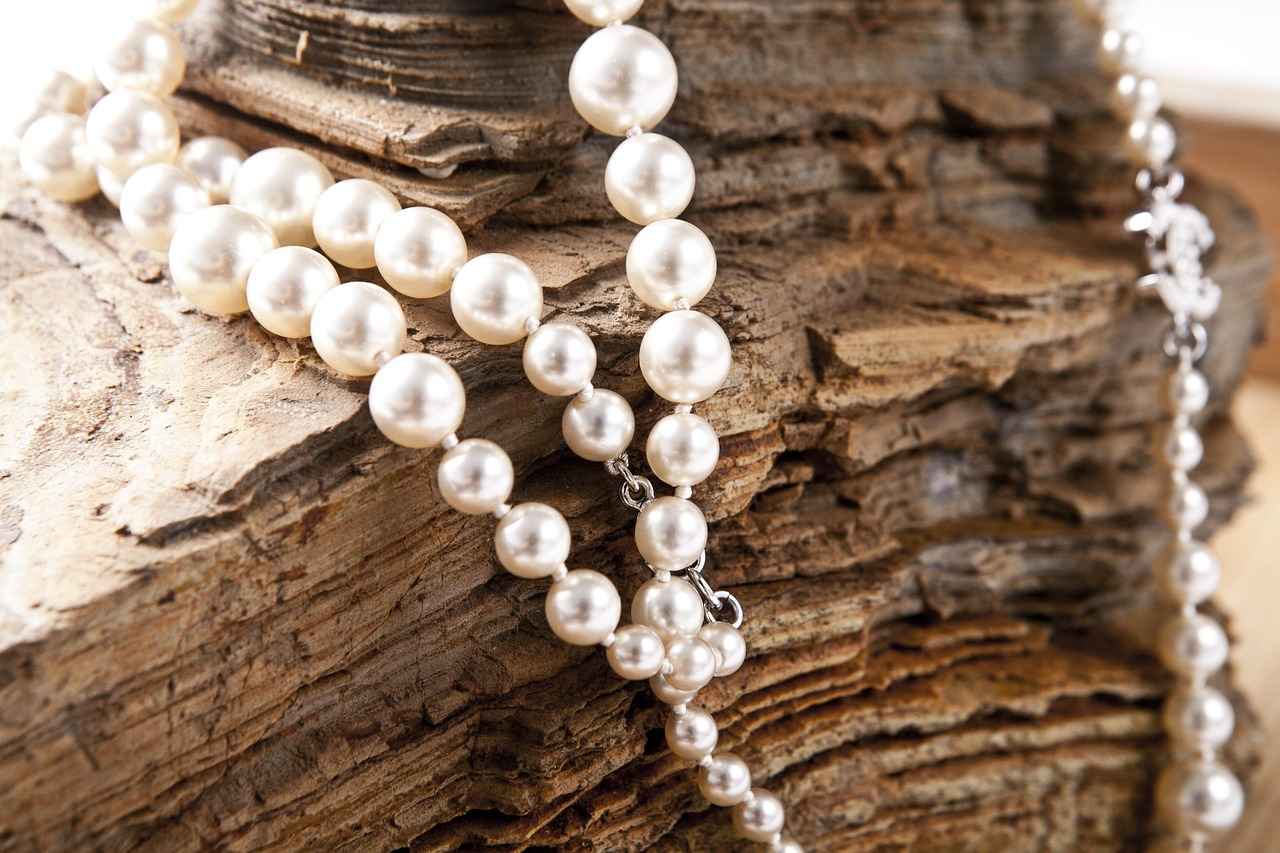
Where to Buy Eco-Friendly Jewelry?
Finding retailers that specialize in sustainable jewelry can be challenging. However, the growing demand for ethically sourced pieces has led to the emergence of numerous brands and platforms dedicated to environmental responsibility. This section highlights some top brands and online platforms committed to ethical practices, making it easier for consumers to make informed choices.
Several online retailers focus exclusively on eco-friendly jewelry, offering a wide range of options that cater to various styles and budgets. Here are some notable names:
- Brilliant Earth – Known for its ethically sourced diamonds and recycled metals, Brilliant Earth offers a stunning selection of engagement rings and fine jewelry.
- Catbird – This Brooklyn-based jeweler specializes in handmade pieces using recycled gold and ethically sourced gemstones, promoting sustainability in every design.
- Ten Thousand Villages – A pioneer in fair trade, this platform features unique jewelry crafted by artisans from around the world, ensuring fair wages and ethical practices.
- Missoma – Combining contemporary design with sustainability, Missoma offers a range of trendy jewelry made from recycled materials.
Supporting local artisans at craft fairs is another excellent way to find unique, sustainable jewelry pieces. These events not only showcase local talent but also allow you to engage directly with the creators, fostering a deeper connection with your purchases. To find local craft fairs:
- Check community calendars or local event listings.
- Visit artisan markets or pop-up shops in your area.
- Follow local artists on social media to stay updated on their events.
Recognizing truly ethical jewelry brands requires understanding their sourcing and manufacturing practices. Here are some tips to help you identify brands that align with your values:
- Research Certifications: Look for certifications like Fair Trade, Responsible Jewelry Council, or B Corp that indicate a commitment to ethical practices.
- Brand Transparency: Check if the brand provides clear information about its sourcing, production processes, and the materials used in their jewelry.
Choosing sustainable jewelry not only reflects your values but also contributes positively to the environment. By opting for eco-friendly pieces, you help reduce the carbon footprint associated with jewelry production. Many brands are now implementing practices that minimize their environmental impact, such as using recycled materials and supporting fair trade.
Proper care extends the life of your eco-friendly jewelry pieces. Regular cleaning and maintenance are essential for keeping your jewelry looking its best. Here are some tips:
- Cleaning: Use eco-friendly cleaning solutions and soft cloths to gently clean your pieces.
- Storage: Store your jewelry in a dry, cool place, and consider using a soft pouch or a separate compartment to prevent scratches.
By supporting sustainable jewelry brands and local artisans, you can make a positive impact on the environment while enjoying beautiful, ethically made pieces. As the market for eco-friendly jewelry continues to grow, consumers have more options than ever to choose from, ensuring that their purchases align with their values.
Top Online Retailers for Sustainable Jewelry
In an age where sustainability is becoming increasingly important, the demand for eco-friendly jewelry is on the rise. Consumers are now more aware of the environmental impact of their purchases, leading to a surge in online retailers dedicated to offering sustainable and ethical jewelry options. This article explores some of the , shedding light on their unique offerings and commitment to eco-conscious practices.
When searching for sustainable jewelry, it’s essential to understand what qualifies a retailer as eco-friendly. Sustainable jewelry brands typically prioritize ethical sourcing, utilize recycled materials, and ensure fair labor practices throughout their supply chains. By supporting these retailers, consumers can make a positive impact on the environment and society.
- Brilliant Earth: Known for its commitment to ethically sourced diamonds and recycled metals, Brilliant Earth offers a wide range of stunning jewelry pieces. Their transparency about sourcing practices sets them apart, making them a top choice for eco-conscious consumers.
- Catbird: This Brooklyn-based jeweler specializes in handmade pieces crafted from recycled gold and conflict-free diamonds. Catbird’s dedication to sustainability extends to their packaging, which is entirely eco-friendly.
- Vrai: Vrai creates beautiful, sustainable jewelry using lab-grown diamonds, significantly reducing the environmental impact associated with traditional diamond mining. Their modern designs appeal to a younger audience eager to embrace sustainable fashion.
- Mejuri: Mejuri focuses on fine jewelry that is both affordable and ethically made. They prioritize transparency in their supply chain and use recycled materials whenever possible, making their pieces accessible for the eco-conscious consumer.
- Made Trade: An online marketplace for ethically made products, Made Trade features a variety of sustainable jewelry brands. Each brand is vetted for its commitment to fair labor practices and environmentally friendly materials.
These online retailers are not just selling jewelry; they are actively contributing to the movement towards sustainable fashion. By prioritizing ethical production and environmental responsibility, they help reduce the overall carbon footprint associated with the jewelry industry. Furthermore, many of these brands engage in initiatives that support local artisans and communities, ensuring that their business practices uplift rather than exploit.
When exploring eco-friendly jewelry options, it’s crucial to look for specific indicators of sustainability. Check for certifications that demonstrate a brand’s commitment to ethical practices, such as Fair Trade or B Corp certification. Additionally, researching a brand’s transparency regarding its sourcing and manufacturing processes can help ensure that your purchase aligns with your values.
Yes, many sustainable jewelry brands offer pieces at various price points, making eco-friendly options accessible to a wider audience. Retailers like Mejuri and Made Trade provide affordable yet stylish options without compromising on ethical standards. Shoppers can find beautiful, sustainable jewelry that fits their budgets while supporting responsible practices.
In conclusion, the rise of online retailers focusing on eco-friendly jewelry reflects a growing consumer demand for sustainability in fashion. By choosing to shop from these brands, you not only enhance your jewelry collection but also contribute to a more sustainable future.
Local Artisans and Craft Fairs
Supporting local artisans at craft fairs not only leads to the discovery of unique, sustainable jewelry pieces, but it also fosters a sense of community and promotes ethical practices within the fashion industry. In this section, we will explore the benefits of buying directly from creators, how to find these events, and the impact of your purchases.
When you purchase from local artisans, you are investing in the community and supporting small businesses. This not only helps to keep traditional craftsmanship alive but also encourages the use of eco-friendly materials. Many artisans prioritize sustainable practices in their work, ensuring that their pieces are not only beautiful but also environmentally responsible.
- Online Research: Websites such as Eventbrite and local community boards often list upcoming craft fairs and artisan markets.
- Social Media: Follow local artisans and craft organizations on platforms like Instagram and Facebook to stay updated on events.
- Word of Mouth: Ask friends and family for recommendations or join local groups that focus on crafts and handmade goods.
When you buy from local artisans, you gain access to one-of-a-kind pieces that often cannot be found in mainstream stores. Each piece tells a story, reflecting the artisan’s creativity and passion. Additionally, purchasing directly from creators often means:
- Fair Compensation: Artisans typically earn a higher percentage of the sale compared to mass-produced items sold in retail stores.
- Transparency: You can ask artisans about their materials and processes, ensuring that you are making an informed choice.
- Connection: Building a relationship with the creator can enhance your appreciation for the piece and the craftsmanship involved.
Local artisans often use recycled materials and ethically sourced gemstones in their creations. This not only reduces waste but also minimizes the carbon footprint associated with mining and production. By choosing to support these artists, you are contributing to a more sustainable future.
Attending craft fairs is a great way to immerse yourself in the local art scene. You can meet artisans, learn about their techniques, and even participate in workshops. These events often feature a variety of handmade goods, including jewelry, textiles, and home decor, allowing you to discover new artists and expand your collection.
Every purchase from a local artisan is a step towards promoting sustainable practices in the jewelry industry. By choosing to buy handmade, you are reducing the demand for mass-produced items that often exploit labor and environmental resources. Your support helps to create a market for ethical goods, encouraging more artisans to adopt sustainable practices.
In summary, supporting local artisans at craft fairs is a rewarding experience that benefits both the community and the environment. By investing in unique, sustainable jewelry pieces, you are not only enhancing your personal style but also contributing to a more ethical and eco-friendly fashion industry.
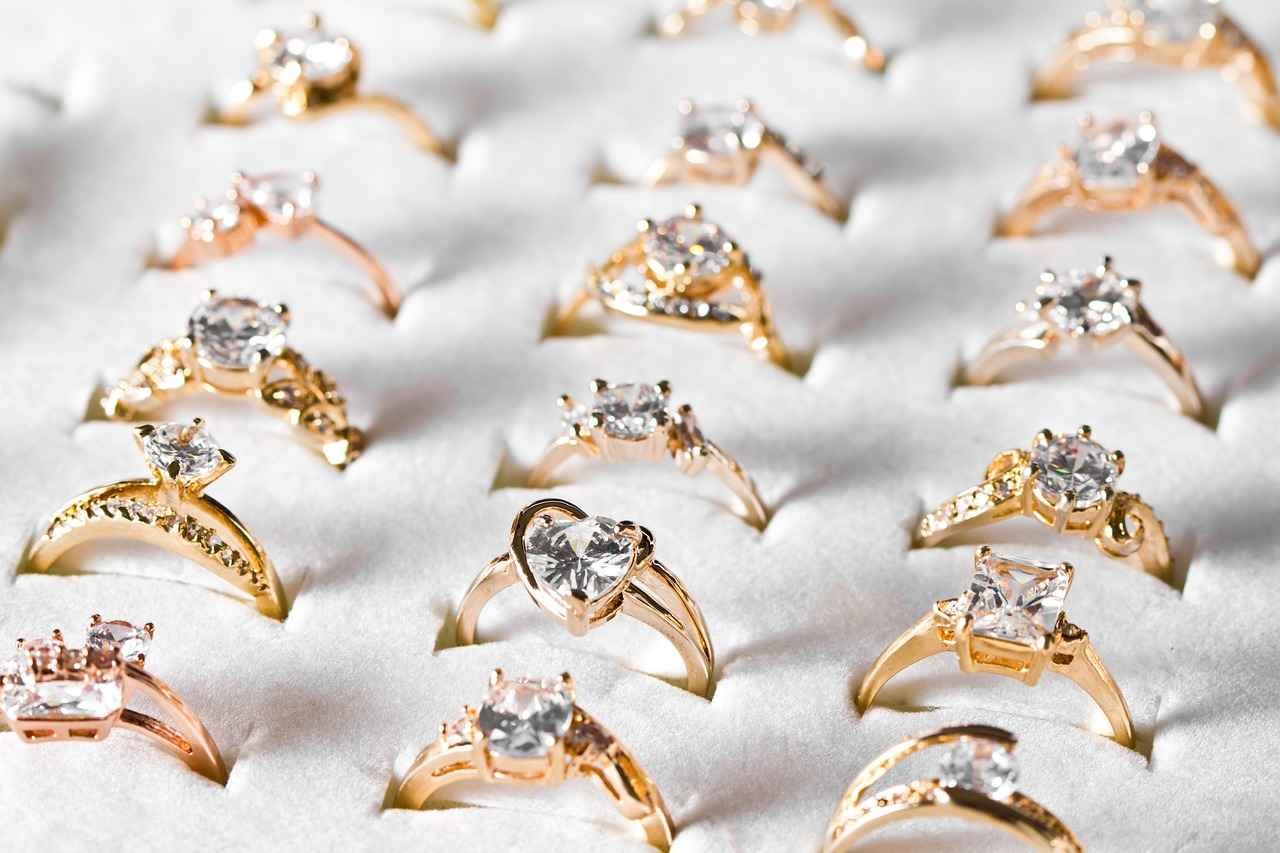
How to Identify Ethical Jewelry Brands?
Identifying ethical jewelry brands is crucial for consumers who wish to align their purchases with their values. As the demand for sustainable and ethically sourced products rises, understanding how to recognize these brands becomes increasingly important. Below, we explore key aspects that can help you identify jewelry brands committed to ethical practices.
One of the first steps in identifying ethical jewelry brands is to examine their sourcing practices. Brands that prioritize ethics often provide detailed information about where and how they source their materials. Look for brands that:
- Source materials locally to reduce transportation emissions.
- Utilize recycled or reclaimed metals to minimize the need for new mining.
- Offer transparency in their supply chain, detailing the origins of gemstones and metals.
Ethical brands not only focus on sourcing but also on their manufacturing processes. To ensure a brand is ethical, consider the following:
- Labor practices: Are workers paid fair wages and provided safe working conditions?
- Environmental impact: Does the brand utilize eco-friendly practices during production?
- Waste management: How does the brand handle waste and by-products from manufacturing?
Another effective way to identify ethical jewelry brands is to look for certifications and memberships in reputable organizations. Some notable certifications include:
- Fair Trade Certified: Ensures fair wages and safe working conditions.
- Responsible Jewelry Council: Promotes ethical sourcing and sustainability.
- Certified B Corporation: Indicates a commitment to social and environmental performance.
Customer feedback can be a valuable resource when assessing a brand’s ethical standing. Look for:
- Positive testimonials: Customers often share their experiences regarding the brand’s practices.
- Social media presence: Brands that engage with their community tend to be more transparent.
- Third-party reviews: Websites dedicated to ethical fashion can provide insights into various brands.
Don’t hesitate to reach out to brands directly with questions regarding their practices. A reputable brand will be open and willing to share information about:
- Their sourcing methods and the origins of their materials.
- Labor policies and how they ensure fair treatment of workers.
- Environmental initiatives they have in place to minimize their ecological footprint.
Buying from local artisans can often lead to discovering ethical jewelry. Local makers typically have a direct connection to their materials and production processes, ensuring transparency. Look for:
- Craft fairs: These events often feature local artisans who prioritize sustainability.
- Online platforms: Websites that specialize in handmade goods can connect you with ethical creators.
By following these guidelines, you can confidently identify and support jewelry brands that align with your ethical values. Remember, every purchase you make can contribute to a more sustainable and equitable world.
Certifications and Labels to Look For
When it comes to making responsible purchasing decisions in the jewelry industry, understanding certifications and labels that signify a brand’s commitment to sustainability is crucial. These indicators not only help consumers identify ethical practices but also promote transparency within the market. Here, we will explore the most recognized certifications and labels that can guide you in your quest for eco-friendly jewelry.
Several organizations have established certifications that ensure jewelry is produced under ethical and sustainable conditions. Familiarizing yourself with these can empower you to make informed choices. Below are some of the most significant certifications to look for:
- Fair Trade Certified: This certification guarantees that the artisans and workers involved in the jewelry-making process are treated fairly and compensated adequately. It promotes ethical labor practices and environmental sustainability.
- Responsible Jewelry Council (RJC): The RJC certifies companies that adhere to ethical, social, and environmental standards in their supply chains. Brands that are RJC-certified demonstrate a commitment to responsible sourcing and production.
- EcoCert: Focused on environmental sustainability, EcoCert evaluates the ecological impact of jewelry production. Brands with this certification utilize environmentally friendly practices and materials.
- Conflict-Free Diamonds: This label ensures that diamonds are sourced from areas free of conflict and human rights abuses. It supports ethical mining practices and promotes peace in affected regions.
Certifications serve as a trustworthy guide for consumers who wish to support sustainable brands. They provide a level of assurance that the jewelry you purchase aligns with your values regarding ethical labor practices and environmental stewardship. Additionally, brands that seek certification often undergo rigorous audits, ensuring that they maintain high standards throughout their operations.
While certifications are a strong indicator of a brand’s commitment to sustainability, it’s essential to verify their claims. Here are some practical steps you can take:
- Research the Brand: Look for detailed information about the brand’s sourcing and production practices. A reputable brand will be transparent about their processes.
- Read Customer Reviews: Customer experiences can provide insights into the brand’s authenticity and commitment to ethical practices.
- Check for Transparency: Brands that openly share their supply chain information and sustainability reports are more likely to be genuinely committed to ethical practices.
In addition to the primary certifications mentioned, there are other labels that can also indicate a brand’s commitment to sustainability:
- Green Seal: This label focuses on environmental responsibility across various industries, including jewelry. It ensures that products meet strict environmental standards.
- Global Organic Textile Standard (GOTS): Although primarily for textiles, some jewelry brands use organic materials that meet GOTS criteria, indicating a commitment to organic farming and sustainable practices.
By familiarizing yourself with these certifications and labels, you can confidently navigate the jewelry market and make informed purchasing decisions that align with your values. Remember, each piece you choose not only reflects your personal style but also your commitment to a more sustainable future.
Researching Brand Transparency
When it comes to making **ethical** purchases, especially in the jewelry sector, understanding brand transparency is paramount. As consumers become increasingly aware of the impact their choices have on the environment and society, it is essential to know how to assess a brand’s commitment to **sustainability** and ethical practices.
Brand transparency refers to the openness and honesty of a company regarding its sourcing and production processes. This is crucial for ethical brands as it builds trust with consumers. When brands are transparent, they allow customers to make informed decisions based on the **ethical implications** of their purchases. By understanding where materials come from and how products are made, consumers can support brands that align with their values.
- Visit the Brand’s Website: A reputable brand will often have a dedicated section on their website explaining their sourcing practices. Look for information on materials used, production methods, and the story behind their products.
- Check for Certifications: Look for certifications from recognized organizations that indicate ethical practices, such as Fair Trade, Responsible Jewelry Council, or similar labels.
- Read Customer Reviews: Customer feedback can provide insights into a brand’s practices. Look for reviews that mention transparency and ethical sourcing.
- Follow the Brand on Social Media: Brands that prioritize transparency often share behind-the-scenes content about their sourcing and production processes on social media platforms.
Once you gather information about a brand, it’s important to assess their overall commitment to sustainability. Here are some key factors to consider:
- Material Sourcing: Are the materials recycled or ethically sourced? Brands that prioritize sustainability often use recycled metals and ethically mined gemstones.
- Production Methods: Consider whether the brand uses environmentally friendly production methods. This includes minimizing waste and reducing energy consumption.
- Labor Practices: Ethical brands should ensure fair labor practices, treating workers with respect and providing fair wages.
- Community Impact: Brands that give back to their communities or support local artisans often have a more sustainable approach.
In today’s digital age, several tools and resources can help you evaluate a brand’s transparency:
- Online Databases: Websites like Good On You and Ethical Consumer provide ratings for various brands based on their sustainability practices.
- Social Media Insights: Engage with brands on social media. Transparency often shines through in direct interactions with consumers.
- Documentaries and Articles: Look for documentaries and articles that explore the jewelry industry’s impact on the environment and society. They often highlight brands that prioritize ethical practices.
In conclusion, understanding and researching brand transparency is essential for anyone looking to make ethical jewelry purchases. By taking the time to investigate a brand’s sourcing and production practices, you can ensure your purchases contribute positively to both the environment and society. Remember, the more informed you are, the more impact you can make with your choices.
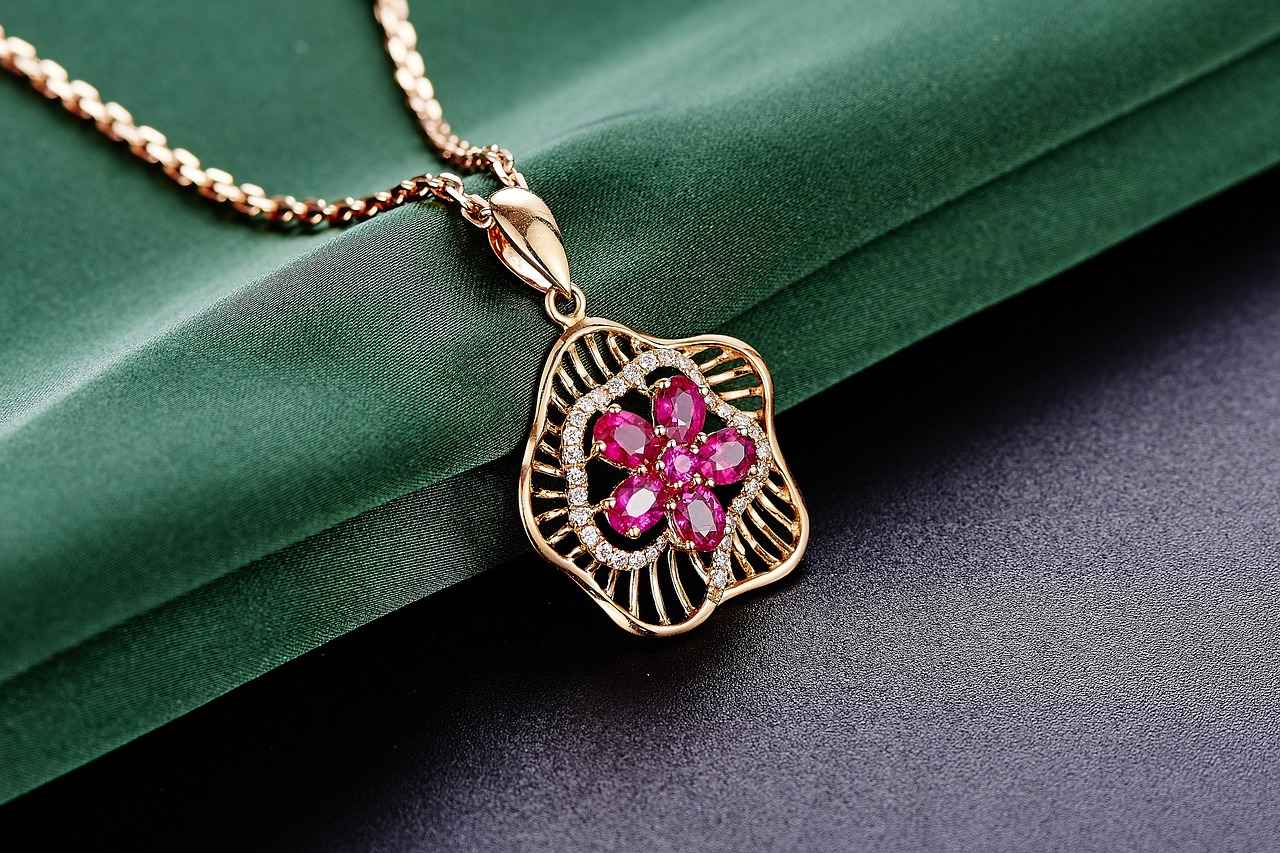
The Impact of Sustainable Jewelry on the Environment
Understanding the environmental impact of jewelry is crucial for consumers who wish to make informed choices that align with their values. The jewelry industry has long been associated with significant environmental degradation, from harmful mining practices to excessive waste generation. However, the rise of sustainable jewelry offers a beacon of hope, showcasing how consumers can contribute positively to the planet while still enjoying beautiful adornments.
Sustainable jewelry is crafted using methods that prioritize environmental responsibility. By choosing eco-friendly options, consumers can help reduce the detrimental effects of traditional jewelry production. Here are some key benefits:
- Reduction of Mining Impact: Traditional mining practices can lead to deforestation, soil erosion, and loss of biodiversity. Sustainable jewelry often uses recycled materials, which minimizes the need for new mining operations.
- Lower Carbon Footprint: Many eco-conscious brands utilize renewable energy sources in their production processes, resulting in a significantly lower carbon footprint compared to conventional jewelry manufacturing.
- Waste Reduction: By using recycled metals and ethically sourced gemstones, sustainable jewelry brands create less waste, contributing to a cleaner environment.
Eco-friendly jewelry often incorporates materials that are less harmful to the environment. Some of the most common materials include:
- Recycled Metals: Gold, silver, and platinum can be repurposed, reducing the need for new mining.
- Ethically Sourced Gemstones: These gems are obtained from mines that adhere to strict environmental and ethical standards.
- Lab-Created Stones: These alternatives offer the beauty of natural gemstones without the environmental impact associated with mining.
When consumers choose sustainable jewelry, they often support fair trade practices that ensure artisans and workers receive fair wages and work in safe conditions. This not only uplifts communities but also promotes sustainable development. By prioritizing brands that adhere to fair trade principles, consumers can help create a more equitable jewelry supply chain.
Consumers play a vital role in promoting sustainable practices within the jewelry industry. Here are some actionable steps:
- Research Brands: Look for brands that prioritize sustainability and are transparent about their sourcing and manufacturing processes.
- Choose Quality Over Quantity: Investing in high-quality, timeless pieces reduces the need for frequent replacements, thereby minimizing waste.
- Advocate for Change: Support initiatives that promote sustainable practices within the jewelry industry and encourage brands to adopt eco-friendly methods.
In conclusion, the impact of sustainable jewelry on the environment is profound. By understanding the benefits of eco-friendly options and making conscious choices, consumers not only enhance their personal style but also contribute to a healthier planet. The movement towards sustainable jewelry is not just a trend; it is a necessary shift towards a more responsible and ethical future in fashion.
Reducing Carbon Footprint
is a critical aspect of sustainable jewelry practices, as the jewelry industry has historically contributed significantly to environmental degradation. By choosing eco-conscious brands, consumers can play a pivotal role in minimizing their carbon footprint. This section delves into the various strategies that ethical jewelry brands employ to achieve this goal.
- Utilizing Recycled Materials: Many sustainable jewelry brands prioritize the use of recycled metals and materials. By sourcing gold, silver, and other metals from recycled sources, they significantly reduce the need for mining, which is an energy-intensive process that emits a large amount of carbon dioxide.
- Ethical Sourcing of Gemstones: Brands that focus on ethically sourced gemstones often work with suppliers who adhere to environmental standards. This practice not only ensures that gemstones are obtained without harming the environment but also often involves lower transportation emissions due to local sourcing.
- Eco-Friendly Packaging: Sustainable jewelry brands frequently adopt eco-friendly packaging solutions. By using biodegradable or recyclable materials for packaging, they further reduce their overall carbon footprint.
- Local Production: Many eco-conscious brands emphasize local production to minimize transportation emissions. By creating jewelry close to their consumer base, they reduce the carbon footprint associated with shipping and logistics.
In addition to these practices, many brands engage in carbon offsetting initiatives. This involves investing in projects that reduce carbon emissions elsewhere, such as reforestation efforts or renewable energy projects. By doing so, they can effectively balance out their carbon footprint, making their overall operations more sustainable.
Moreover, consumer awareness plays a vital role in the sustainability of the jewelry industry. When consumers actively seek out brands that prioritize environmental responsibility, they send a clear message to the industry that sustainability is a priority. This demand encourages more brands to adopt eco-friendly practices and invest in sustainable production methods.
Another important aspect to consider is the longevity of sustainable jewelry. High-quality, ethically made pieces tend to last longer than fast-fashion alternatives, which often end up in landfills after a short period of use. By investing in durable jewelry, consumers not only reduce waste but also decrease the demand for new products, further helping to lower the carbon footprint.
In conclusion, the practices employed by eco-conscious jewelry brands significantly contribute to reducing their carbon footprint. By utilizing recycled materials, sourcing ethically, and engaging in local production, these brands are paving the way for a more sustainable future in the jewelry industry. As consumers, making informed choices about where and how to purchase jewelry can lead to a collective impact that benefits our planet.
Supporting Fair Trade Practices
In today’s global market, the significance of fair trade practices cannot be overstated. These practices not only ensure that artisans and workers receive fair compensation for their labor but also promote sustainable development and community empowerment. By choosing to support sustainable jewelry brands that adhere to fair trade principles, consumers can contribute to a positive change in the jewelry supply chain.
Fair trade practices are designed to create equitable trading relationships between producers in developing countries and consumers in wealthier nations. This approach emphasizes ethical sourcing, ensuring that workers are paid a living wage, work in safe conditions, and have access to essential services. By supporting fair trade, consumers can help lift communities out of poverty and promote economic stability.
When consumers choose to buy sustainable jewelry, they are not just purchasing a beautiful piece; they are also investing in the livelihoods of artisans and communities. Here are some key benefits:
- Empowerment: Fair trade practices empower artisans, allowing them to gain financial independence and improve their quality of life.
- Community Development: Profits from fair trade jewelry sales often go back into local communities, funding schools, healthcare, and infrastructure projects.
- Environmental Sustainability: Many sustainable jewelry brands prioritize eco-friendly materials and practices, reducing the environmental impact of their production.
Fair trade jewelry plays a crucial role in promoting ethical consumption. By choosing brands that prioritize fair trade, consumers can:
- Support Ethical Practices: Ensure that the jewelry is made without exploitation and adheres to ethical labor standards.
- Encourage Transparency: Fair trade brands are often more transparent about their sourcing and production processes, allowing consumers to make informed choices.
- Make a Positive Impact: Each purchase contributes to the well-being of artisans and their communities, fostering a cycle of positive change.
Finding jewelry brands that adhere to fair trade principles requires some research. Here are some tips:
- Look for Certifications: Many fair trade organizations provide certifications that indicate a brand’s commitment to ethical practices.
- Research Brand Practices: Investigate how brands source their materials and treat their workers. Transparency is a key indicator of a fair trade commitment.
- Read Reviews: Customer feedback can provide insights into a brand’s practices and the quality of their products.
Supporting fair trade practices in the jewelry industry is a meaningful way to contribute to a more sustainable and equitable world. By choosing to invest in sustainable jewelry, consumers can help ensure that artisans and workers are compensated fairly, ultimately leading to better livelihoods for communities involved in the jewelry supply chain. The impact of each purchase extends far beyond the product itself, fostering a brighter future for many.
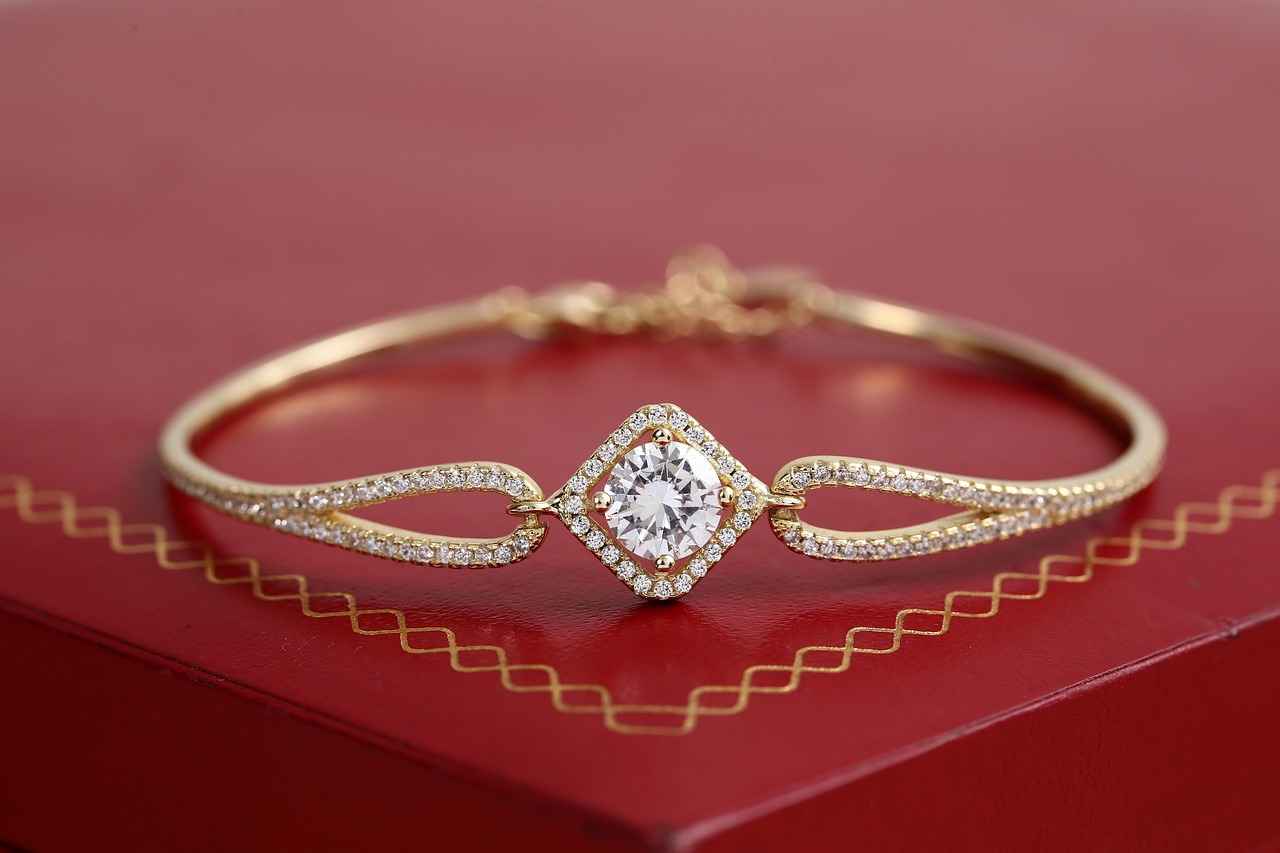
How to Care for Eco-Friendly Jewelry?
Eco-friendly jewelry is not only a beautiful accessory but also a sustainable choice that reflects your commitment to the environment. To ensure that these precious pieces last for years to come, proper care is essential. This section provides practical tips and insights on how to maintain and preserve your eco-friendly jewelry, allowing you to enjoy its beauty while minimizing your ecological footprint.
Taking care of your jewelry is crucial for several reasons:
- Longevity: Proper care extends the lifespan of your jewelry, allowing you to cherish it for many years.
- Preservation of Materials: Eco-friendly jewelry often uses sustainable materials that need special attention to maintain their integrity.
- Environmental Impact: By maintaining your jewelry, you reduce the need for replacements, thus minimizing waste.
Regular cleaning is vital to keep your jewelry looking its best. Here are some eco-friendly cleaning methods:
- Use Mild Soap: A gentle soap mixed with warm water can effectively clean most jewelry. Avoid harsh chemicals that can damage the materials.
- Soft Cloths: Use a soft microfiber cloth to gently polish your pieces after cleaning to restore their shine.
- Natural Solutions: For stubborn tarnish, a paste made from baking soda and water can be a safe and effective remedy.
How you store your eco-friendly jewelry can significantly affect its condition. Consider these tips:
- Separate Storage: Store pieces separately to prevent scratching and tangling. Use soft pouches or individual compartments in a jewelry box.
- Avoid Humidity: Keep your jewelry in a cool, dry place to prevent tarnishing and deterioration of materials.
- Regular Checks: Periodically inspect your jewelry for any signs of wear or damage. Early detection can prevent more serious issues.
To keep your jewelry in top condition, avoid the following:
- Harsh Chemicals: Steer clear of bleach, ammonia, or other strong cleaning agents that can harm your jewelry.
- Extreme Temperatures: Avoid exposing your jewelry to high heat or extreme cold, which can alter its structure.
- Water Exposure: Limit exposure to water, especially for pieces with organic materials, as moisture can cause damage over time.
If your jewelry has lost its luster or shows signs of wear, consider these restoration tips:
- Professional Cleaning: Seek professional cleaning services that specialize in eco-friendly practices to restore your jewelry’s original beauty.
- Repairs: If a piece is damaged, consider having it repaired rather than replaced. Many artisans can fix and restore jewelry sustainably.
- Reimagining Pieces: Transform old or broken jewelry into new designs, giving them a fresh life while reducing waste.
By implementing these care tips, you can ensure that your eco-friendly jewelry remains a cherished part of your collection for years to come. Remember, taking the time to maintain your pieces not only enhances their beauty but also supports sustainable practices that benefit the planet.
Cleaning and Maintenance Tips
Jewelry is not just an accessory; it is a reflection of personal style and sentiment. To ensure that your pieces maintain their beauty and shine, regular cleaning and maintenance are crucial. This section delves into eco-friendly cleaning methods that are safe for both your jewelry and the planet.
Over time, jewelry can accumulate dirt, oils, and tarnish, which can dull its appearance. Regular cleaning not only keeps your pieces looking their best but also helps in identifying any potential issues, such as loose stones or weak clasps, before they become significant problems. By maintaining your jewelry, you can extend its lifespan and preserve its value.
Embracing sustainability doesn’t mean sacrificing cleanliness. Here are some eco-friendly cleaning methods you can use:
- Warm Soapy Water: Mix a few drops of mild dish soap with warm water. Soak your jewelry for a few minutes, then gently scrub with a soft brush.
- Baking Soda Paste: Create a paste using baking soda and water. Apply it to tarnished silver jewelry and gently rub with a soft cloth before rinsing thoroughly.
- Vinegar and Water Solution: Combine equal parts of vinegar and water for a natural cleaning solution that works well on gemstones and metals alike.
- Olive Oil and Lemon Juice: For a natural polish, mix olive oil with lemon juice. This is particularly effective for gold jewelry, giving it a beautiful shine.
The frequency of cleaning depends on how often you wear your jewelry. For pieces worn daily, such as engagement rings, a monthly cleaning is advisable. For less frequently worn items, a thorough cleaning every few months should suffice. Always inspect your jewelry for signs of wear and tear during cleaning.
In addition to regular cleaning, proper storage is vital for maintaining the integrity of your jewelry. Here are some tips:
- Use Soft Pouches: Store each piece in a soft pouch or a separate compartment to prevent scratches and tangling.
- Avoid Humidity: Keep your jewelry in a dry place, as humidity can lead to tarnishing and deterioration.
- Regularly Check Settings: Periodically check the settings of your stones to ensure they are secure.
While cleaning your jewelry, it is essential to avoid certain practices:
- Avoid Harsh Chemicals: Stay away from bleach and ammonia, as they can damage metals and gemstones.
- Don’t Use Abrasive Materials: Avoid scrubbing with rough materials that can scratch surfaces.
- Skip Ultrasonic Cleaners: These can be too harsh for delicate pieces and may loosen stones.
By following these eco-friendly cleaning and maintenance tips, you can ensure that your jewelry remains beautiful and lasts for generations. Not only will you be taking care of your treasured pieces, but you will also be making a conscious effort to protect the environment.
Storage Solutions for Longevity
When it comes to preserving the beauty and integrity of your eco-friendly jewelry, implementing proper storage solutions is essential. Proper storage can prevent damage and wear, ensuring that your treasured pieces remain in excellent condition for years to come. In this section, we will explore effective storage solutions that cater specifically to the needs of sustainable jewelry.
Eco-friendly jewelry often incorporates unique materials and craftsmanship that require special care. By understanding the importance of proper storage, you can:
- Prevent Scratches: Delicate materials can easily scratch against harder surfaces.
- Avoid Tangles: Chains and delicate pieces can become tangled if not stored correctly.
- Minimize Exposure to Elements: Certain materials can be affected by humidity, light, and temperature.
Here are some practical storage solutions to keep your eco-friendly jewelry safe and well-preserved:
Storing your jewelry in soft pouches or lined boxes can provide an extra layer of protection. These materials help prevent scratches and keep pieces separated. Consider using:
- Velvet or Silk Pouches: Ideal for individual pieces, especially earrings and rings.
- Jewelry Boxes with Compartments: Perfect for organizing multiple items without them touching.
Exposure to direct sunlight can cause fading and deterioration of certain materials. Store your jewelry in a cool, dark place to minimize the risk of damage. A drawer or a dedicated jewelry box is often the best option.
Humidity can lead to tarnishing, especially in metal pieces. To combat this, consider using anti-tarnish strips or silica gel packets in your storage area. This will help absorb excess moisture and keep your jewelry in pristine condition.
Organizing your jewelry by type can help you find pieces easily and reduce the risk of tangling. Consider grouping:
- Necklaces: Hang them on a jewelry tree or a dedicated necklace holder.
- Earrings: Use a specialized earring organizer or keep them in pairs within pouches.
- Rings: Store them in a ring box or a compartmentalized tray.
Make it a habit to regularly check your jewelry for any signs of wear or damage. This proactive approach allows you to address issues before they worsen. Additionally, ensure that clasps and settings are secure to avoid losing any precious pieces.
By implementing these effective storage solutions, you can significantly extend the life of your eco-friendly jewelry. Proper care not only preserves the beauty of your pieces but also reflects your commitment to sustainability. Remember, investing time in the right storage practices is just as important as choosing the right jewelry.
Frequently Asked Questions
- What is eco-friendly jewelry?
Eco-friendly jewelry is made from sustainable materials, such as recycled metals and ethically sourced gemstones. It’s designed to minimize environmental impact while promoting ethical practices in the jewelry industry.
- How can I identify ethical jewelry brands?
Look for brands that provide transparency about their sourcing and production processes. Certifications like Fair Trade or recycled metal standards can also indicate a brand’s commitment to sustainability.
- Where can I buy sustainable jewelry?
You can find eco-friendly jewelry at various online retailers specializing in sustainable fashion, as well as at local craft fairs where artisans showcase their unique creations.
- What materials are commonly used in sustainable jewelry?
Sustainable jewelry often incorporates recycled metals like gold and silver, along with ethically sourced gemstones. These materials help reduce environmental damage associated with mining.
- How do I care for my eco-friendly jewelry?
To maintain your eco-friendly jewelry, clean it regularly with gentle, eco-friendly methods and store it properly to prevent damage. This helps extend the life of your beautiful pieces.
